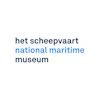
06. Noord 0, Republic at Sea: Brazilian landscape
This painting by the Dutch artist Frans Post shows an idyllic Brazilian landscape. Post lived and worked in Brazil for eight years on a commission for the governor-general of Dutch Brazil, Johan Maurits, Prince of Nassau-Siegen. He asked Post to record the country as accurately as possible. Here we see a tropical landscape with palm trees and a wide river. What we don't see are the 25,000 enslaved Africans who were forced to work on the sugar-cane plantations. Between around 1600 and 1863, the Dutch transported approximately 600,000 Africans by ship, under appalling conditions, to South America and the Caribbean where they were sold to European plantation owners. The plantations in Dutch Brazil and Suriname mostly grew sugar cane, cocoa, tobacco and cotton for the European market. The Dutch West India Company in particular earned a great deal of money from the Dutch slave trade and the profitable sale of goods produced using slave labour.


The National Maritime Museum
Het Scheepvaartmuseum (The National Maritime Museum) shows the strong connection between the maritime world and society as a whole, and more specifically the impact of this on the lives of many individuals. The collection of The National Maritime Museum is one of the largest and most notable maritime collections in the world with approximately 400,000 objects, including paintings, models of ships, navigation instruments, and maps of the world. Discover 500 years of Dutch Maritime history as well as its strong links to today’s society and the society of the future.
- Kattenburgerplein 1
- Amsterdam Netherlands
- (020) 52 32 222
- www.hetscheepvaartmuseum.nl
